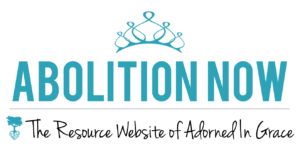
Prostitute.
Sex worker.
Rape victim.
Each of these terms brings a different image into our minds, and carries with it a variety of assumptions. While the first two often convey a lifestyle by choice, the last term brings a picture of assault and helplessness. How do you categorize which women in escort ads fall into each category? Which would you say applied to a fifteen year-old girl walking down 82nd Avenue?
Restoration is always the priority.
Prostitute.
Sex worker.
Rape victim.
Each of these terms brings a different image into our minds, and carries with it a variety of assumptions. While the first two often convey a lifestyle by choice, the last term brings a picture of assault and helplessness. How do you categorize which women in escort ads fall into each category? Which would you say applied to a fifteen year-old girl walking down 82nd Avenue?
For the Portland Police, this was a crucial question for them to address in 2008. Until this point, all crimes related to prostitution fell under the responsibility of the Drug and Vices Department–even underage “prostitutes.” Yet it was clear that this approach was not successfully confronting the growing problem of sex trafficking.
A proposal was made to reorganize the departmental response to the issue. Instead of seeing these cases as a “prostitution” crime, these cases would now be processed by the sex crimes unit, which handled cases of sexual assault, rape, and abuse. It was a huge step in recognizing these girls and women as victims, not lawbreakers.
Instead of immediately thrusting victims of sex trafficking into “a justice system that she’s frightened of,” the focus was on the victim’s well-being, explained retired Sergeant Mike Geiger. “If she’s hungry, we feed her. If she needs clothing, we clothe her. If she needs comfort, we connect her with people who will care about her. And then let her know that we will be here when the time is right.”
Similar to any other sexual assault victim, they also took immediate steps to “connect [these victims] with an advocate, somebody they could talk to and impose no burden or commitment on their part. What that allowed [survivors] to do was have a safe place to talk, and … allowed them time to get to the place of willingness to report and make disclosures. All of it was predicated on the idea of establishing priorities. The priority was always her restoration.”
This new victim-centered approach became the foundation for all of their methodology. “If your long-term goal is her restoration, then you build everything else around that. You structure everything around the goal that she is not going to be exploited anymore,” said Geiger. The department began learning more about the signs and implications of complex trauma, trauma bonding, and other contributing factors.
“If they run away, or refuse to cooperate, we don’t just turn our backs and wash our hands,” explained Geiger. “We maintain an open-door policy, where we never reject them. It’s never too late now– we would never say, ‘We gave you a chance, and you blew it.’ It’s like the prodigal son, or daughter–you’re always willing to welcome them with open arms.”
The department has seen an incredible amount of success with this approach. Their primary goal, victim safety and restoration, has been possible through multiple partnerships within the community. As an additional benefit, numbers of prosecuted cases also skyrocketed. When victims feel safe and have their needs genuinely cared for, they are more likely to disclose information which could increase conviction rates and even prison lengths. However, Geiger was quick to point out that this is an important, but purely secondary benefit. The most important focus is that throughout the whole process, these women are not harmed and can begin the process of healing.
This victim-centered approach also drives Geiger’s resistance to defining local sex trafficking with statistics. Because sex trafficking is not a crime reported in the same way as a theft or murder, it’s very hard to define exact numbers.
“This is a significant problem that must be addressed. It’s a management necessity that we try to understand the scope. But it’s not something we are accurately able to quantify, and I don’t think it should be the focus,” he reminds us.
“When we think in numbers, we lose sight on the people that represent those numbers. I prefer to focus on that.”
His dedication to remaining victim-focused and keeping them a top priority is representative of the entire Portland Police’s anti-trafficking unit. Their crucial decision in 2008 was what Geiger describes as a “value-based decision”–made simply because they felt this was the right thing to do. Rather than trying to claim the limelight, they quietly stepped up and just began making the change. Hardly anyone outside the department even knew such a major shift was happening.
“Detectives from the Portland Police Human Trafficking Unit don’t ever get credit for the great job that they do, because they don’t run around telling everyone how great they are,” explains Geiger.
“They’re just trying the best they can, to respond in the best way they can.”
Mike Geiger retired as Sergeant of the Portland Police Bureau’s Anti-trafficking Task Force in November of 2014 and is currently working as Local Development Director with Compassion First in Beaverton, Oregon. With over 20 years as a Portland Police officer—the last 13 years in Sex Crimes, Homicide and Human Trafficking, Mike is a recognized leader in the field of anti-trafficking collaboration efforts in the U.S. and worldwide. He is also a speaker of numerous conferences and events. He can be reached at [email protected].

